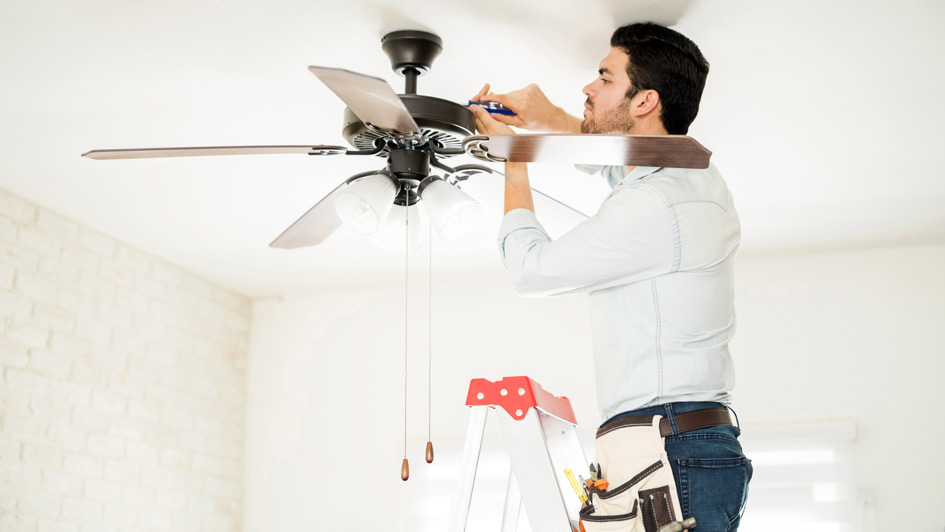
Ceiling fans are one of the most overlooked ways to enhance comfort and cut energy costs. By enhancing air circulation and supporting your HVAC system, ceiling fans and energy efficiency are truly a perfect combination. They offer a practical, energy-efficient way to stay cool while easing strain on your AC—potentially sparing you from unnecessary air conditioning repair.
In this blog, the experts at The Chilly Pig explain how ceiling fans can make your home feel more comfortable while increasing your HVAC efficiency. We'll also offer some HVAC efficiency tips that take advantage of ceiling fans.
Comfort vs. Temperature: Getting Comfortable with the Wind-Chill Effect Indoors
Ceiling fans don’t actually change the room’s temperature—they make your home more comfortable by increasing air movement across your skin. This is known as the wind-chill effect, and it can make a room feel up to 4 degrees cooler without adjusting the thermostat. That means you remain cool and enjoy the benefits of indoor air circulation from your ceiling fan while relying less on your air conditioner—helping reduce your electric bill in summer.
The Best of Both: Advantages of Pairing Fans and Air Conditioning Together
There are several benefits to using ceiling fans and air conditioning at the same time, especially on hotter days. By pairing both, you increase HVAC efficiency and keep your home cooler with less effort from your cooling system.
Benefits of using ceiling fans and AC together:
- Ceiling fans help lower HVAC load by distributing cool air more evenly around the room. Reducing HVAC stress is important, because it can save you from a breakdown that could lead to premature AC or furnace installation.
- Using ceiling fans boosts the comfort level of your home by getting rid of warm pockets and improving air movement.
- Combining ceiling fans and AC can lower your utility usage. If you have a home automation system, you can even adjust your smart thermostat settings to increase the temperature slightly while your ceiling fan is running.
Clockwise vs. Counterclockwise Ceiling Fan Rotation: Which is the Correct Direction?
To make full use of your ceiling fans year-round, it’s important to ensure blades are rotating in the proper direction for the season. The direction impacts how air flows, which can either or push warm air downward so you feel warmer.
When to rotate ceiling fans counterclockwise
On hot days, ceiling fans should turn counterclockwise at a quick speed. This creates a breeze that moves air toward the floor, increasing the wind-chill effect and creating a cooler sensation.
When to spin ceiling fans clockwise
In the winter, set your fan to rotate clockwise on a gentle setting. This gently pulls cool air upward and pushes warm air near the ceiling down toward you, making the space feel cozier without touching your thermostat.
How to Pick Out the Best Ceiling Fan for My Home
Picking the best ceiling fan depends on a few important details, including blade design, airflow rating and room dimensions. First, look for fans that offer a good combination of ECFM airflow and blade pitch to deliver efficient air circulation in your space:
- ECFM is how much air a fan circulates—the cubic feet per minute, or CFM—per watt of electricity used. Fans with greater ECFM are the most energy efficient.
- Blade pitch refers to the angle of the blades. A sharper blade pitch increases airflow but can also stress the fan’s motor.
Also, consider room size when sizing a ceiling fan—a fan that’s too small won’t circulate sufficient air, while one that’s too large may be overpowering for the room.
Increase Your HVAC Efficiency With the Team from The Chilly Pig
At The Chilly Pig, our HVAC technicians can help you enjoy year-round comfort while minimizing wear on your heating and cooling systems. From practical fan advice and air conditioning installation to smart thermostats and furnace repair, we offer comprehensive services that fit your lifestyle. Schedule your appointment by calling 321-205-1234 today.
